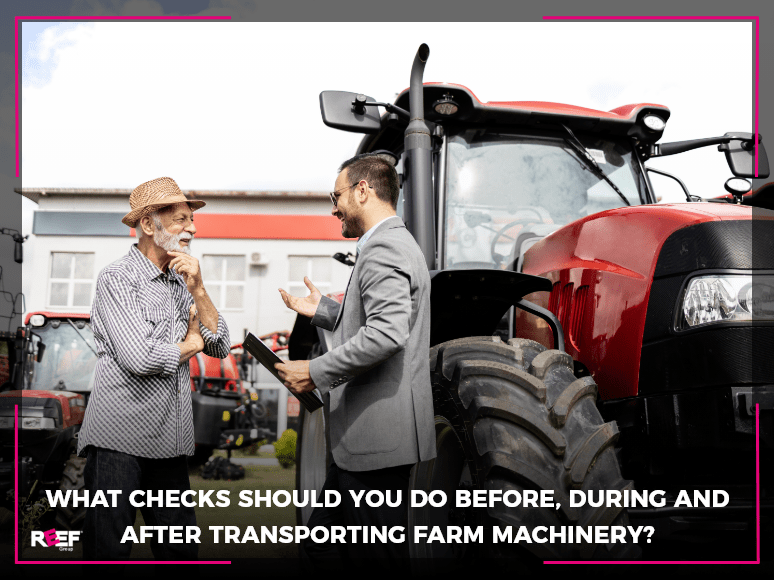Essential Tips for Effective Crane Transportation

Essential Tips for Safe and Efficient Equipment Transporatation
May 19, 2025
Essential Factors for Effective Heavy Equipment Transport
June 26, 2025
Moving cranes across tough terrains is absolutely essential for heavy-lifting jobs like construction and infrastructure. These cranes face uneven ground, rocky hills, and muddy paths—typical at remote sites. Without the right machine, it’s easy for projects to stall and timelines to slip.
Choosing the right crane for these rugged conditions is crucial. Rough terrain cranes are built specifically for such challenging settings, featuring reinforced tyres, dependable suspension systems, and advanced safety measures to handle off-road obstacles confidently. Pairing this specialised equipment with a strategic logistics plan boosts efficiency and keeps lifting operations safe even in extreme conditions.
Major Terrain Obstacles for Crane Transport
Transporting cranes across challenging terrain can be extremely tricky, with rough ground and muddy areas easily causing vehicles to lose grip or become unstable under heavy loads. Often, remote locations lack adequate infrastructure, making the safe and smooth transit of equipment even tougher. That’s why thorough surveying and careful route planning are vital, often needing route tweaks and swift adjustments on-site.
Bad weather adds another layer of difficulty. Blazing heat can put stress on hydraulic systems and tyres, while steady rainfall leads to poor visibility and slippery conditions. High winds can also create stability issues, especially during heavy lifts at height—meaning additional safety measures have to be in place.
With such unpredictable conditions, bringing in specialised equipment and solid planning is critical. Using machinery built for uneven terrain, combined with careful risk assessments and detailed backup plans, ensures cranes operate safely even in tough spots.
Role of Rough Terrain Cranes in Difficult Environments
Rough terrain cranes are specially built for places where regular cranes might struggle. Their sturdy tyres and all-terrain capability make light work of rocky, muddy, or uneven ground, while an advanced suspension system absorbs impacts and ensures operations stay smooth during heavy lifting.
Stability is improved through the use of outriggers and counterweights, allowing safe lifting even on sloped or soft surfaces—a huge plus on unpredictable job sites. Beyond their clever design, these cranes stand out because they’re extremely efficient: minimal setup time and limited need for site preparation.
Thanks to their quick-deploy hydraulic booms, projects can keep moving without the long wait often seen with conventional crane setups.
Key Technological Advancements to Aid Transport
Telescopic boom systems with advanced hydraulics give cranes impressive flexibility, allowing them to operate comfortably even in cramped or unstable locations. Their extensive reach and accurate control make them perfect where fixed booms can’t be used practical options, significantly reducing the chances of delays on tricky projects.
Real-time features, like load-limit indicators and intelligent control systems, provide critical feedback instantly. Operators can swiftly adjust the crane settings, ensuring the load stays safe and the crane never exceeds capacity.
Electronic steering upgrades also contribute significantly to crane transport. By pairing digital control with standard steering techniques, these improvements lead to easier handling. They provide better positioning accuracy and a smoother ride over tough landscapes, ensuring cranes reach where they’re needed safely and promptly.
Logistical Challenges and Practical Strategies
Global supply chains have faced major disruptions lately, compounded by rising fuel costs impacting transport budgets and delivery schedules. The lasting impacts of the pandemic, geopolitical uncertainties, and natural disasters have created unpredictable delays and mounting operational expenses.
To ease these burdens, companies are embracing route optimisation strategies using real-time traffic data and predictive analytics. These tools pinpoint the most effective routes, cutting fuel use and keeping delays at bay. Incorporating flexible scheduling also helps businesses swiftly adapt to shifting demand and changing supply chain scenarios. Meanwhile, partnering with an experienced transport company based in Perth and switching to electric and hybrid vehicles complement these efforts by reducing fossil fuel dependency and trimming down expenses.
Alongside cost savings and efficiency, sustainability has become a prime focus. Logistics planners now factor in environmental impact when selecting transport routes and vehicles, significantly lowering emissions. These sustainable practices ensure businesses stay eco-responsible while maintaining dependable service in today’s volatile and complex market.
Best Practices to Enhance Efficiency and Safety
Evaluating the worksite thoroughly sets the stage for safe and efficient crane operations. A detailed assessment of ground conditions helps spot potential site issues, such as uneven or soft surfaces, ensuring the crane’s load capacity and stability match the project’s demands.
Equally important is comprehensive operator training. Skilled operators can quickly adapt to different terrains and unexpected site challenges, significantly reducing downtime and avoiding equipment breakdowns. Regular equipment inspections and scheduled maintenance further boost reliability by spotting wear early, keeping performance consistently high under tough conditions.
Built-in safety features provide extra assurance in tricky work settings. Elements like stabilisers, outriggers, and weather-resistant components improve stability and safeguard both machines and personnel. By factoring these safety measures into crane selection and care, companies can confidently manage heavy lifting operations, even in difficult weather or challenging landscapes.
Crucial Takeaways for Successful Crane Transport
Strategic planning is critical for tackling the challenges faced in crane transport. Routes and schedules that factor in varied terrains and tough weather help avoid delays and reduce accident risks. Thorough assessments of potential hazards, such as uneven ground or sudden weather changes, guide better decisions and smoother execution of both transport and site operations.
Working closely with specialist teams can make crane handling a lot simpler. Experts in logistics, equipment choice, and on-site oversight bring invaluable knowledge that boosts coordination. This combined expertise ensures precision in transit and accurate crane placement, saving valuable time and minimising risks in unpredictable conditions.
Embracing new technologies leads to significant improvements in mobility, safety, and efficiency. Innovations such as real-time tracking systems, advanced hydraulics, and upgraded electronic steering significantly enhance crane performance. By incorporating these tech advancements, crews improve both safety standards and equipment responsiveness, leading to smoother, more effective crane transportation.


